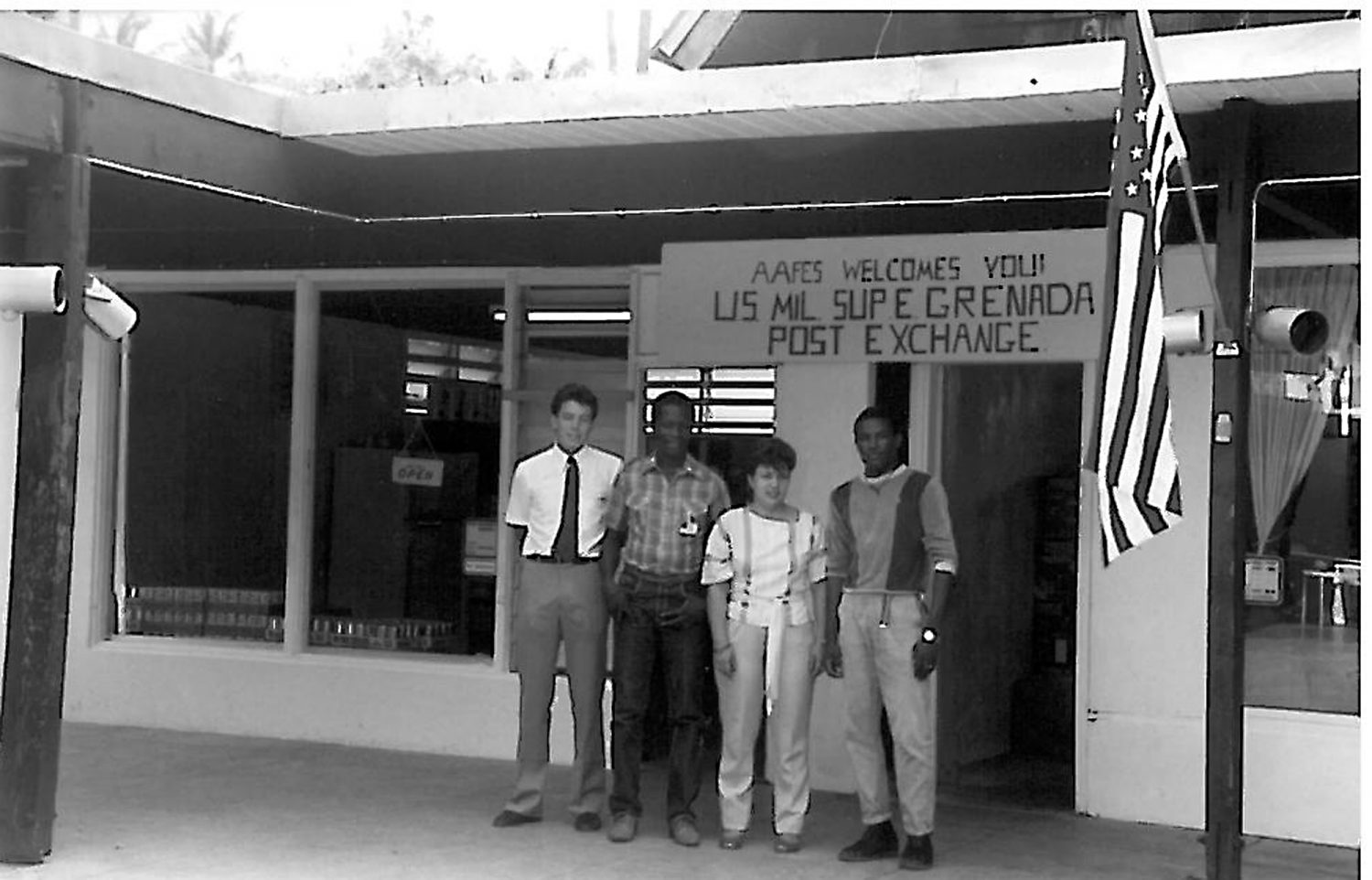#FlashbackFriday: October 1983—The Exchange Supports Operation Urgent Fury in Grenada

On Oct. 25, 1983, U.S. troops invaded Grenada, a small Caribbean island about 100 miles north of the Venezuela coast. The mission, dubbed Operation Urgent Fury, was to rescue U.S. citizens who were on the island when the government was overthrown in a violent coup..
Less than two weeks after the troops landed, the Exchange was ready to support them. Initial support came from Fort Bragg, Puerto Rico and the Eastern Distribution Region in Atlanta.
Tactical field Exchanges (TFEs) were established in Grenada and Barbados, about 160 miles to the northeast. The first TFE, or “PX in a Box,” was set up Nov. 6 at Port Salinas, Grenada. Fort Bragg supplied the TFE, which was operated by non-Exchange military personnel and temporarily hired local nationals. The Barbados TFE opened the next day at Grantley Adams International Airport.
In December, after the brief hostilities had ended, the Grenada TFE was converted to a direct Exchange operation supporting the Joint Caribbean Peace Keeping Force. A civilian Exchange manager replaced the Army officer that had been running the TFE.

The staff of the two-room Exchange at Grand Anse Beach in Grenada in 1983. At left is manager Ricky Byrd, who began his Exchange career in 1982 and retired in 2013, when he was general manager of JBER Elmendorf/Southern Alaska Exchange. The other three people pictured were local nationals who worked at the store.
A two-room Exchange was set up in a corner of the Grenada Beach Hotel complex at Grand Anse Beach. Despite its location, “The Exchange was no luxury resort,” according to “One Hundred Years of Service: A History of the Army and Air Force Exchange Service.” “It had no major physical plant and was without substantial numbers of people to work long hours behind the ringing cash registers.”
Inventory was relatively small—snacks, soft drinks, swimsuits, cigarettes, soap, razors, magazines, foot powder, alarm clocks and insect repellent. Stereos, radios and tape players were sent to the islands through the Atlanta Distribution Center and airlifted from Pope Air Force Base in North Carolina. Demand was high until U.S. troops began to withdraw in June, but because of the airlift, the Exchange supply met the demand.
Forklifts were unavailable in Grenada and Barbados, so manual labor was used to get items on shelves. In Barbados, several military and local national leaders formed a chain to pass 1,000 cases of soft drinks to a second-floor retail area. Within two hours, two-thirds of the drinks were on shelves, but the movement had to stop so the Exchange could open. Customers wanted the drinks that were still on the first floor, so an officer took his cash box with him and opened shop on the first level, where troops quickly bought 66 cases.
Sources: “One Hundred Years of Service: A History of the Army and Air Force Exchange Service,” Exchange Post archives

